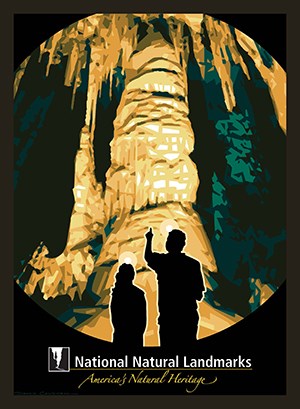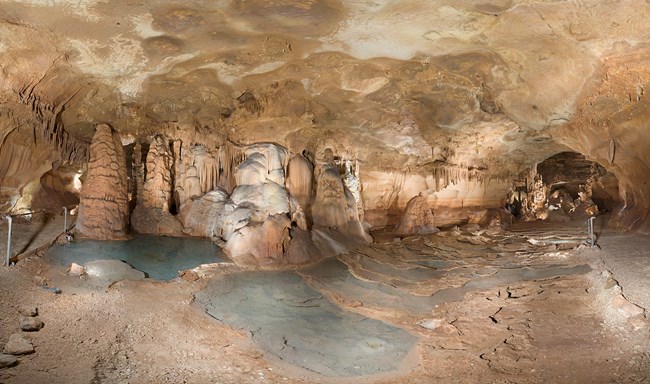
Characterized by a natural opening in the ground extending beyond the zone of light, caves occur in a wide variety of rock types. They can range in size from single, small rooms to interconnecting passages many miles long. Solution caves are the most common and well-known type of cave; others include lava, sea, and glacier caves. Spelothems, or cave formations, such as stalactites, stalagmites, columns, and drapery are mineral deposits that decorate the interior of most caves.
Caves provide habitat for many animals, including those that live in complete darkness and have evolved to be eyeless. Others may utilize a cave or cave entrance for a portion of their lives, such as bats or salamanders.
From limestone caverns to volcanic lava tubes, there are national natural landmarks designated for their outstanding illustration of the different types of caves. Some of these include:

Photo by Peter Jones
2021 International Year of Caves and Karst
The NNL Program is excited to join the celebration of cave and karst resources throughout this International Year of Caves and Karst (IYCK). In addition to learning about some of the NNL caves listed above, we encourage you to explore the links below for more information about upcoming events and activities.
-
Submit an entry to an Art Contest
-
Become a Junior Cave Scientist
-
Join the NPS in celebrating these important resources
-
Learn about and join events world-wide
-
Share your experiences all year using #IYCK2021
Discover more about caves and National Natural Landmarks
Last updated: February 7, 2022
